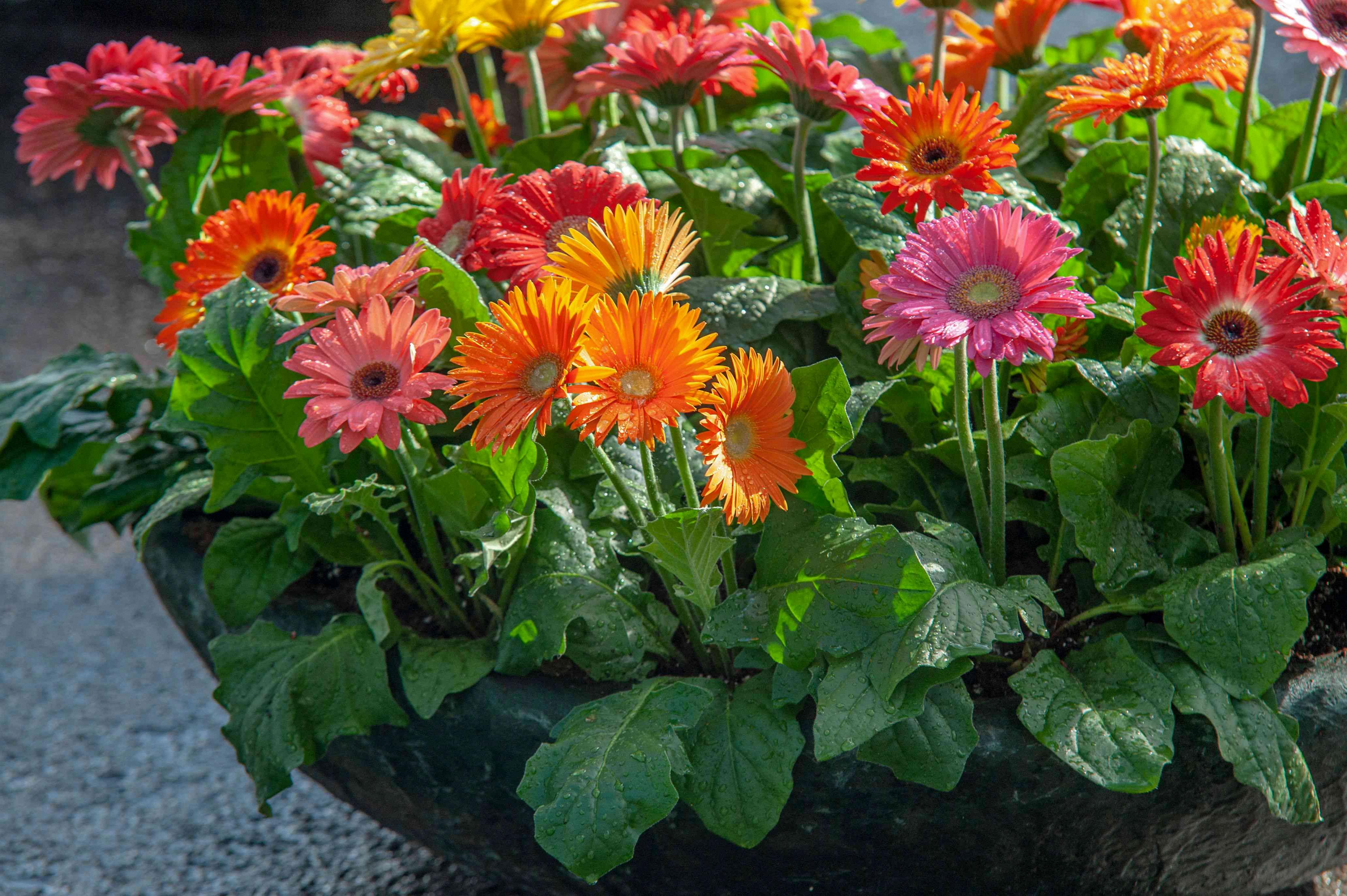Gerbera daisies are a popular flowering plant that can be found in gardens and homes all over the world. They are known for their vibrant colors and long-lasting blooms, making them a favorite among gardeners and florists alike. But as fall approaches, many gardeners wonder whether they should cut back their gerbera daisies to prepare them for the winter months. In this blog post, we will explore the world of gerbera daisies and answer the question: do you cut back gerbera daisies in the fall?
First, let’s take a closer look at gerbera daisies. These flowering plants are native to South Africa and belong to the Asteraceae family. They come in a variety of colors, including red, pink, yellow, orange, and white, and can grow up to 18 inches tall. Gerbera daisies prefer well-drained soil and moderate temperatures, making them a great choice for gardens in warmer regions.
Now, onto the question at hand: should you cut back gerbera daisies in the fall? The answer is yes, but it’s not as simple as just cutting them back. As the autumn season progresses, the foliage of gerbera daisies will begin to fade. At this point, it is time to cut the entire plant back near the ground for winter. This will help the plant conserve energy and prepare for the colder months ahead.
But before you start cutting away, there are a few things to keep in mind. First, make sure to wait until the foliage has completely yellowed and died back before cutting the plant back. If you cut it back too soon, the plant may not have enough time to store up enough energy for the winter. Second, be sure to use sharp, clean shears to make a clean cut. This will help prevent the plant from becoming damaged or infected.
Once you’ve cut back your gerbera daisies for winter, it’s important to store them in a cool, dry place. A cool basement or a room with a north-facing window are good options. Reduce watering durig fall and winter, providing only enough moisture to keep the potting mix from becoming bone dry. Bring the gerbera back into light and warmth when the plant resumes healthy growth in spring.
Cutting back gerbera daisies in the fall is an important step in preparing them for the winter months. By cutting back the entire plant near the ground and storing it in a cool, dry place, you can help ensure that your gerbera daisies come back strong and healthy in the spring. With a little bit of care and attention, these beautiful flowering plants can bring joy and color to your garden or home year after year.
Caring for Gerbera Daisies in the Fall
Gerbera daisies are beautiful and vibrant plants that require proper care in the fall season to keep them healthy. Here are some essential tips to take care of gerbera daisies in the fall:
1. Location: Place the gerbera pot in a cool basement or a room with a north-facing window. This will provide the plant with the right amount of light and temperature necessary for its growth.
2. Watering: Reduce the frequency of watering during fall and winter, providing only eough moisture to keep the potting mix from becoming bone dry. Overwatering can lead to root rot and other fungal diseases.
3. Fertilizer: Use a balanced fertilizer, diluted to half strength, every three weeks to promote healthy growth. However, avoid fertilizing during the winter months when the plant is dormant.
4. Pruning: Remove any dead or yellowing leaves from the plant regularly to prevent the spread of diseases.
5. Protection: Protect the gerbera from frost by covering the pot with a blanket or moving it to a warmer location if necessary.
By following these tips, you can ensure that your gerbera daisies survive the fall and winter season and bloom again in the spring.

Source: thespruce.com
Cutting Back Daisies for Winter
Yes, daisies should be cut back for winter. As the autumn season progresses, the foliage of daisies will begin to fade. It is important to cut the entire plant back near the ground to prepare it for the winter season. This will help the plant to conserve its energy and nutrients during the dormant period. Cutting back the plant also helps to prevent diseases and pests from overwintering in the dead plant material. Therefore, it is essential to cut back daisies for winter to ensure their healthy growth and development in the following year.
Will Gerbera Daisies Return Yearly?
If you have Gerbera daisies and you live in a warmer area like California, then they are likely to come back next year as they are native to South Africa and prefer warmer climates. However, if you live in a cooler climate, you can stil grow Gerbera daisies as the Garvinea series are hardy perennials that will come back year after year in Zones 7-10. It’s important to note that Gerberas need some sun but not intense heat as they are not cacti. With proper care, including regular watering, fertilizing and deadheading, your Gerbera daisies should continue to bloom and return each year.

Conclusion
In conclusion, Gerbera daisies are beautiful and vibrant flowers that add color and life to any garden or indoor space. They are reltively easy to care for, requiring adequate sunlight, regular watering, and well-drained soil. While they are typically grown as annuals in cooler climates, the Garvinea series offers a hardy perennial variety that can survive for multiple years. Gerberas can be propagated by seed or division, making them a great choice for gardeners of all levels of experience. With proper care and attention, these stunning flowers will brighten up any space and bring joy to those who admire them.
